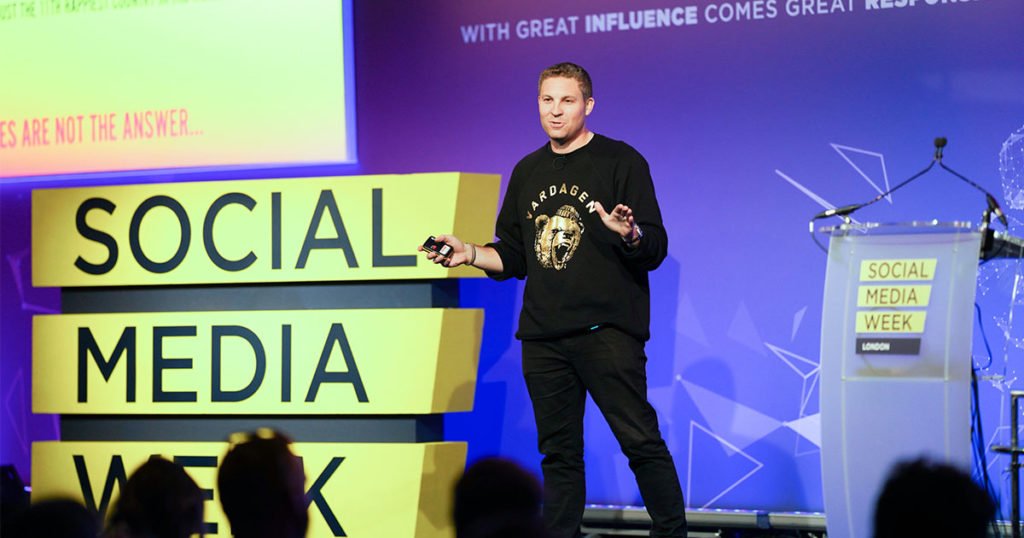Social media was founded on the premise of global connectivity and fun experiences. Somewhere along the way, however, this has become neglected. Where did fun go?
Join SMW Insider to watch this #SMWLDN session
Subscribe
During #SMWLDN, Grey’s Kenny Gold and Jonathan Lee came together for a candid discussion on why it’s become so challenging to differentiate real fun from “fake fun,” and how a more rewarding social media future can be achieved.
The deprioritization of fun

“Social context, political realities, changing trends, everything in the world is being reprioritized over fun. Social media is not exempt,” explained Gold. Instead, we put forth and prioritize our responsibilities that are more important because they’re part of our lives.
Gold and Lee added to this point citing the top three general life focus areas: taking care of family members, financial stability, and physical health. Fun came in at eighth for the U.S. and ninth in the UK.
As a society, there are things we think we should be doing for fun, but we attach other reasons for doing them rather than pure enjoyment of the activity itself. Put simply, we pretend to have fun. Two examples mentioned in the talk include reading for mental wellbeing and exercise for physical health.
“The way these networks have evolved and the way we all behave on them, have fundamentally changed the way that they exist. As a result, people are feeling isolated, lonely and stop coming to social media for fun. In turn, users bases of these networks have dropped significantly,” added Gold.
What makes social fun versus not fun
The top three reasons cited that make social media fun include validation, seeing showing others are up to, and sharing what we’re doing with others.
The same fundamental principles of social is what everyone says is fun but they’re also what everyone says is not fun.
“The validation that we crave is actually is the driver of the pain and the angst that goes along with the questions: am I funny enough with this post? Is this going to be interesting enough? The FOMO of not being at that event creates a lot of issues. It pulls the fun out of what was, in its purest form, something very interesting and enjoyable to do,” said Lee.
The overarching question then becomes, are people still having fun while they’re prioritizing their loved ones, careers, and health? The answer is yes and no. When asked whether or not they were having more fun compared to five years ago, 36 percent of people cited they are having more fun compared to 39 percent who report they’re having less fun.
Making social fun again: a brand’s opportunity

What is real fun and how can brands help redefine how we as marketers define the term and harness it in our stories to create a more rewarding future?
After speaking with a number of industry specialists and psychologists, Lee summarizes real fun is:
- Simple
- Being your most open self
- Fundamentally freeing
- Unleashing creativity
The majority of people agree that if they could have more fun they’d feel less stressed, they’d be happier, and they’d have stronger connections with their friends.
For brands, this translates into emphasizing content that is fun and easy to share, forging supportive communities of like-minded people, making it easy for people to disconnect, and providing users with canvasses to enjoy life and express themselves unabatedly. In turn, marketing has a much broader role to play in other areas of our lives including our productivity.
There is still money in fun

If we could get people to invest more time and effort into seeking out fun, would that have a return on investment for a brand? Can a brand help you have more fun and if so, would this be profitable? The short answer is yes.
Seventy-three percent of people wish that brands helped them create fun. Fifty-percent of people are more likely to consider a brand or if they knew they’d have that fun delivered and of percent, three-quarters (75%) said they’d pay for that privilege.
The pocketable takeaway here, stats aside, is: brand who provide fun can help people solve problems they didn’t even know they had and make money doing so.
While the concept of creating a formula for fun carries contradiction, that doesn’t negate the fact that we have a tremendous opportunity to address one of our most neglected, unrealized, deprioritized, essential human needs.
“Understand who your consumer is and what they like to engage with and find the white space in their life that could be fun and insert it there,” Gold shared as a final parting word of advice.
Join 100,000+ fellow marketers who advance their skills and knowledge by subscribing to our weekly newsletter.
